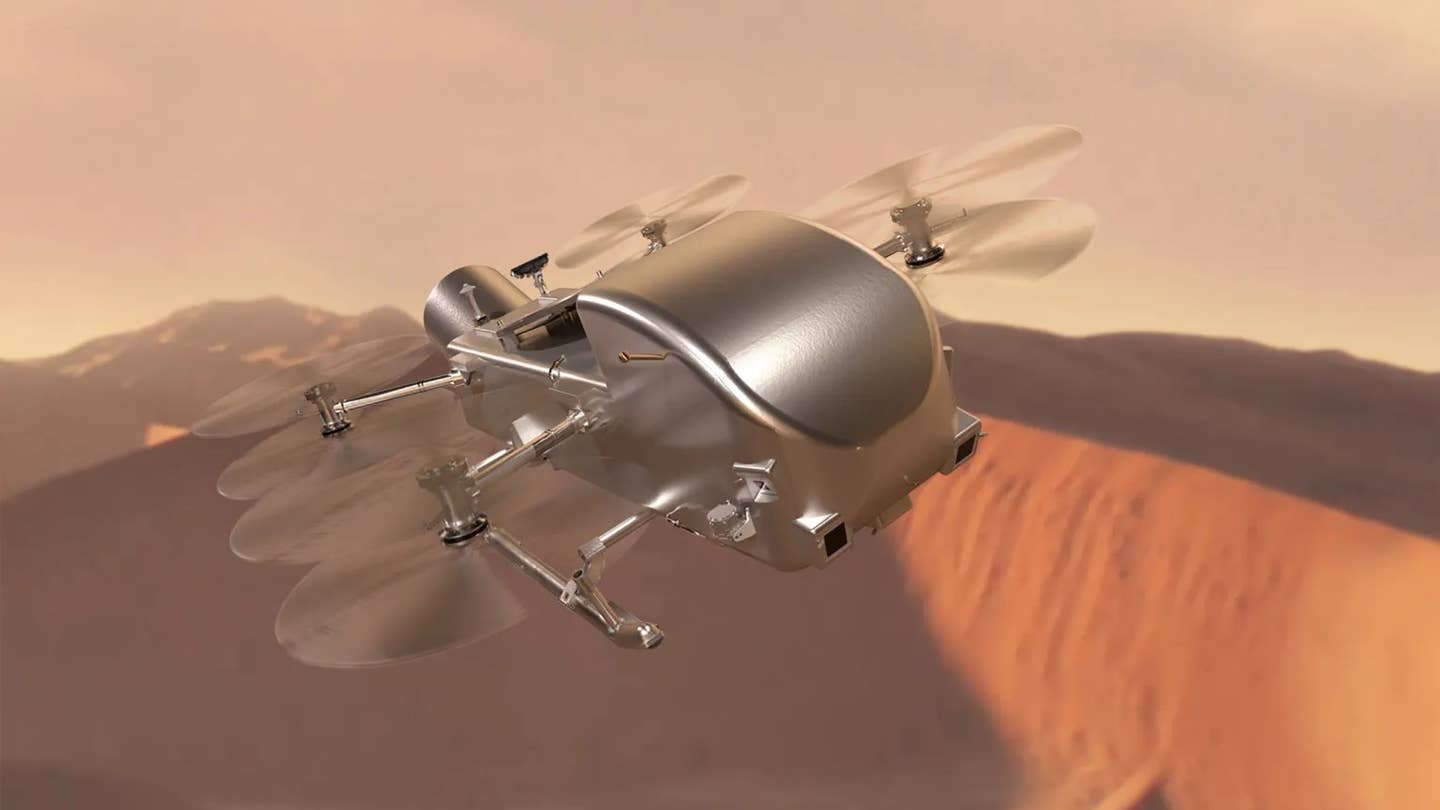NASA Picks SpaceX to Launch Mission to Saturn’s Moon Titan
Space agency’s launch provider of choice has been called upon to handle yet another critical mission.

An artist’s concept of the Dragonfly rotorcraft lander exploring the dunes of Saturn’s moon Titan. [Courtesy: NASA]
NASA’s favorite contractor has picked up yet another critical launch contract.
The space agency on Monday awarded a $256.6 million firm-fixed-price contract to SpaceX, which will launch the Dragonfly mission to Saturn’s moon Titan on the back of its Falcon Heavy rocket from Launch Complex 39A at NASA’s Kennedy Space Center in Florida. Dragonfly’s launch window opens in July 2028. NASA’s Launch Services Program at Kennedy will be responsible for managing the contracted service.
Dragonfly is the name of both the mission and the hybrid rotorcraft-lander that will complete it. It falls under the space agency’s New Frontiers program, which launched the New Horizons mission to Pluto and the edge of the solar system in 2006, as well as the Juno spacecraft that has been orbiting Jupiter since 2016.
The Dragonfly vehicle will explore and collect samples from sites across Saturn’s largest moon—one of the solar system’s rare ocean worlds—in search of the building blocks for life. Researchers are looking for chemical indicators that can tell them about Titan’s habitability and determine whether water- or hydrocarbon-based life has existed (or exists) there.
The nuclear-powered vehicle will be capable of traveling tens of miles in an hour, farther than any existing rover. It would be the first time NASA has flown a vehicle on another planet’s moon for science.
The space agency in April confirmed Dragonfly is a “go” for 2028, with the rotorcraft lander expected to land on Titan in 2034. The program is about two years behind and $2 billion over budget. Those costs were in part driven by NASA’s need for a new heavy-lift launch vehicle to meet its revised timeline, which it found in Falcon Heavy.
SpaceX is the commercial launch provider of choice for NASA and the Pentagon. The company routinely ferries astronauts and cargo to and from the International Space Station (ISS) under a contract with the space agency’s Commercial Crew program. Falcon Heavy and SpaceX’s smaller Falcon 9 rocket have launched key NASA missions in the past two years, including the Europa Clipper probe to explore Jupiter’s moon Europa and the Intuitive Machines robotic lunar lander, part of the Commercial Lunar Payload Services (CLPS) program.
Early next year, SpaceX will launch a second Intuitive Machines lunar mission and Firefly’s Blue Ghost lunar lander. The following year, its Starship human landing system (HLS) will return Americans to the moon for the first time since the Apollo era during the Artemis III mission. In 2027, the firm will launch the first two modules for the Gateway lunar space station, also part of the Artemis initiative.
And at the end of the decade, a specially designed SpaceX deorbit vehicle will bring the ISS crashing back to Earth following its retirement.
Like this story? We think you'll also like the Future of FLYING newsletter sent every Thursday afternoon. Sign up now.

Sign-up for newsletters & special offers!
Get the latest FLYING stories & special offers delivered directly to your inbox






